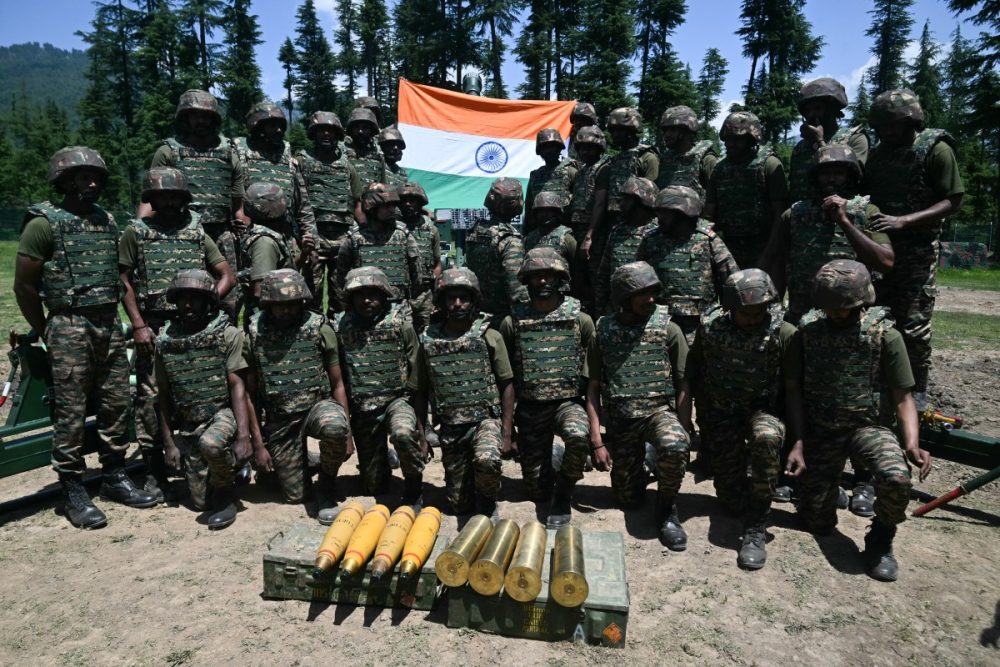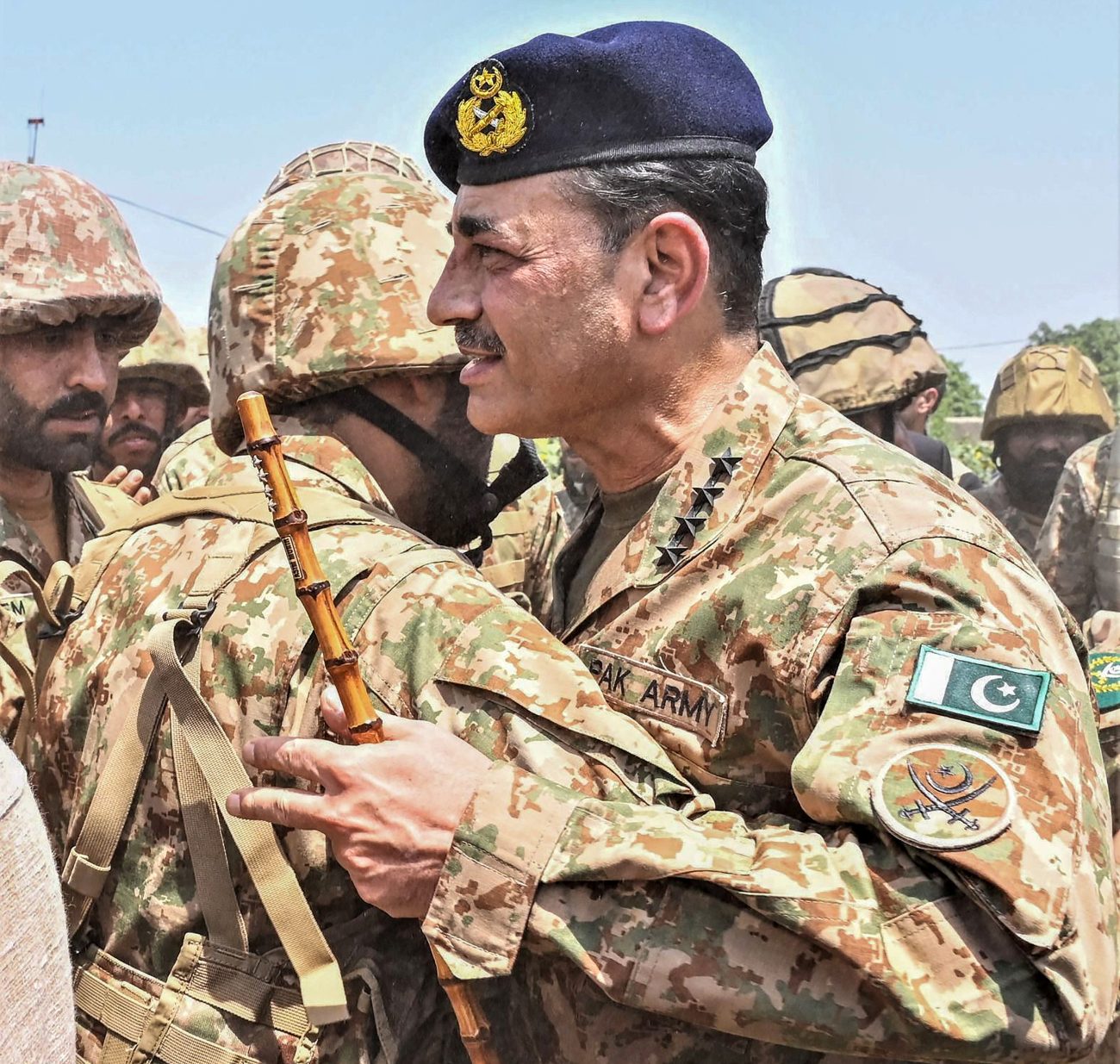From BVR Missiles To Stunning Shootdown Claims — Who Held The Edge In India-Pakistan War?

“If the truth is in question, let both sides open their aircraft inventories to independent verification – though we suspect this would lay bare the reality India seeks to obscure,” Pakistan’s Defence Minister Khawaja Muhammad Asif said in a social media post.
He went on to warn that, “Such comical narratives, crafted for domestic political gain, only raise the dangerous risk of strategic miscalculation in a nuclear environment,” as quoted by Al Jazeera.
Shortly after his remarks, Asif’s official account on X was blocked in India. Visitors now see the message, “@KhawajaMAsif has been withheld in India in response to a legal demand.” The move comes days after India blocked the Pakistan government’s official X account and banned 16 Pakistani YouTube channels.
The Trigger: April 22 Pahalgam Attack
The backdrop to this war of words is a deadly escalation that began on April 22. That day, heavily armed terrorists attacked civilians in the Baisaran meadows near Pahalgam in Jammu and Kashmir, killing at least 26 people.
It was the deadliest attack on civilians in India since the 2008 Mumbai attacks, which were carried out by the Pakistan-based Lashkar-e-Tayyiba (LeT).
The Resistance Front (TRF), a Pakistan-backed proxy of LeT, claimed responsibility. The United States later designated TRF both a Foreign Terrorist Organization (FTO) and a Specially Designated Global Terrorist (SDGT), citing its role in the massacre.
Pakistan’s ally China condemned the killings and called for stronger regional cooperation against terrorism.
Over the following weeks, tensions escalated into cross-border strikes. On May 10, US President Donald Trump announced a truce, but the narrative battle was only beginning.
India’s Version Of Events
On August 9, three months after the clashes, Indian Air Force Chief Air Chief Marshal Amar Preet Singh claimed the IAF had shot down six Pakistani aircraft, including five fighter jets, during four days of hostilities in May.
Speaking at the 16th Air Chief Marshal LM Katre Lecture in Bengaluru, he said, “We have five confirmed kills and one large aircraft, which could be either an ELINT or an Airborne Early Warning and Control (AEW&C) aircraft, which was taken on at a distance of 300 kms. This is actually the largest ever recorded surface-to-air kill that we can talk about,” Singh said.
Praising the Russian-made S-400 system as a “game-changer,” Singh claimed Pakistan failed to penetrate India’s air defence shield.
“Our air defence systems did a wonderful job. The S-400 system, which we had recently bought, has been a game-changer. The range of that system has really kept their aircraft away from their weapons, like long-range glide bombs that they have. They have not been able to use any of those because they have not been able to penetrate the system,” he said.
Singh also alleged that Pakistan lost aircraft on the ground when the IAF struck hangars in Jacobabad and Bholari. He claimed that several US-made F-16s under maintenance were destroyed in Jacobabad, while in Bholari, an AEW&C aircraft may have been lost.
“We have indications that at least one AEW&C in its hangar, along with a few F-16s under maintenance, were destroyed,” Singh said.

Pakistan’s Counterclaim
Islamabad quickly rejected Singh’s account. “Not a single Pakistani aircraft was hit or destroyed by India,” Asif said, noting that for three months after the operation “no such claims were voiced.”
Pakistan has its own version of the May clashes. On the night of May 6–7, it claimed to have downed six Indian aircraft, including three French-made Rafales.
In late May, in an interview with Bloomberg, India’s Chief of Defence Staff Gen. Anil Chauhan acknowledged for the first time that some Indian aircraft were indeed lost. He did not reveal how many or what type.
In July, however, National Security Adviser Ajit Doval took a different tack. Speaking at the 62nd Convocation of IIT Madras, he challenged Pakistan and the foreign press to produce proof of any damage to Indian infrastructure during the clashes.
“Foreign media said Pakistan did this and that. Show me one photograph, one image, of damage to any Indian target, even a broken glass pane,” Doval said. “The images they circulated showed only 13 air bases in Pakistan before and after 10 May… whether in Sargodha, Rahim Yar Khan, Chaklala… I’m just telling you what the foreign press showed based on those images. We are fully capable of causing damage to Pakistani air bases.”
Social Media Crossfire
Pakistan-based accounts and news outlets were quick to mock India’s claim of downing six PAF fighter jets.
Pak Spectrum, a local news outlet, posted on X: “India claims the IAF shot down 6 Pakistani planes – 90 days after the conflict ended. Only good for a laugh.”
Journalist Faraz Saeed joined in, writing: “Pakistan shot down 6 Indian planes in 1 hour during the war. India woke up after 90 days to claim it had downed 6 Pakistani planes after the war.”
Another user, @KASHIF2O, commented: “Three months later, India suddenly realises it shot down six Pakistani planes. Lie after lie under pressure from its people and opposition will only embarrass India further. Pakistan has already offered an impartial inventory count of aircraft from both sides.”
One post from @Silly_MID__ON took a jab at New Delhi: “After India’s claim of shooting down 6 Pakistani jets, Pakistan has opened its inventory for counting. Your turn, India – care to match?”
The fighting may have stopped in May, but the online war shows no sign of ending. Indian users are celebrating Singh’s remarks with pride, posting clips and memes aimed at Pakistan. Pakistanis are laughing it off as propaganda, recycling their own “we won” narratives.
Three months later, there’s still no concrete proof from either side… no photos, no videos, no independent verification. Right now, it’s less like a dogfight and more like a cricket match where both teams claim victory, but the scoreboard is blank. Until hard evidence surfaces, the truth remains stuck somewhere between the two versions.

Pakistan Military Unhappy?
The rhetoric between India and Pakistan has rarely been polite, but in recent months it has grown sharper, more personal, and worryingly more nuclear. The latest escalation has been fuelled not from New Delhi or Islamabad, but from Florida, where Pakistan’s army chief General Asim Munir used American soil to issue one of the most provocative statements in years.
During his second trip to the United States in as many months, Munir told a private gathering, “If we think we are going down, we’ll take half the world down with us.” It was a blunt, unmistakable reference to Pakistan’s nuclear capability.
Interestingly, it came just a day after Indian Air Force chief Air Chief Marshal A.P. Singh declared publicly that India had shot down at least six Pakistani fighter jets during May’s Operation Sindoor.
Munir went further, warning that if India were to build a dam on the Indus River, “We will wait for it, and when it does, we will destroy it with ten missiles. He also singled out Reliance Industries’ Jamnagar refinery in Gujarat, the largest single-site refining complex in the world, as a potential target in any future conflict.
According to attendees at the closed-door event, Munir even linked this threat to a social media post circulated during the recent India-Pakistan standoff.
The post paired a Quranic verse with a photograph of Reliance chairman Mukesh Ambani, and Munir allegedly claimed he had personally authorised it “to show India” what Pakistan might do “next time.”
Why Jamnagar Matters?
The Jamnagar refinery is not just an industrial site; it is a pillar of India’s economic infrastructure. Capable of processing 33 million tonnes of crude oil each year, i.e., about 12% of India’s total refining capacity, it meets a substantial share of the country’s energy needs and is also a major exporter of refined petroleum products.
A strike on it would not only cause physical damage but also disrupt India’s economy and energy security.
This is not the first time Pakistani officials have made such threats. In April, a government minister openly stated that Pakistan’s missile arsenal, including Ghauri, Shaheen, and Ghaznavi systems, along with 130 nuclear warheads, is intended “only for India.”
India’s Response
New Delhi reacted swiftly to Munir’s latest remarks.
The Ministry of External Affairs called them a textbook case of “nuclear sabre-rattling” and said they reinforced doubts about “the integrity of nuclear command and control in a state where the military works hand-in-glove with terrorist groups.”
The MEA also objected to the fact that these statements were made from the territory of a friendly third country, describing them as “highly irresponsible” and “a serious danger to regional and global security.”
The timing added another layer of complexity. Relations between India and the US were already under strain due to President Donald Trump’s tariff policy. Against this backdrop, many in New Delhi viewed Washington’s willingness to host Munir, who was even treated to a special White House luncheon usually reserved for heads of state, as troubling.
Islamabad Pushes Back
Pakistan’s foreign ministry quickly moved to reframe the controversy, accusing India of twisting Munir’s words. In a statement, it rejected New Delhi’s characterisation of the comments as “nuclear blackmail,” calling it “misleading and self-serving.”
The spokesperson insisted Pakistan “remains firmly opposed to the use or threat of use of force” and accused India of “sabre-rattling and war-mongering whenever confronted.” Islamabad also described itself as a “responsible nuclear-weapon state.”
Washington’s Silence and What It Might Mean
The U.S. has so far not commented on Munir’s nuclear threats. For some observers, this silence is troubling.
Critics argue it was inappropriate for Washington to give a platform to a foreign military leader to make provocative statements against a strategic partner, especially when India–U.S. ties are already under pressure.
Some analysts speculate that Washington’s muted response could signal a recalibration of its South Asia policy—possibly tilting back towards Pakistan to meet other geopolitical needs, including its tense standoff with Iran.
Meanwhile, Pakistan is reportedly expanding its nuclear arsenal with Chinese assistance. The Stockholm International Peace Research Institute (SIPRI) estimates that as of January 2025, Pakistan possesses around 170 nuclear warheads, compared to India’s 180.
Not everyone in the US is staying quiet. Former Pentagon official Michael Rubin has openly called for Munir to be banned from entering the United States. Speaking to ANI, he described the remarks as “completely unacceptable” and questioned Pakistan’s capacity to act as a responsible state.
He likened Munir’s rhetoric to that of Osama bin Laden, saying, “Asim Munir is Osama bin Laden in a suit.”
Rubin urged Washington to strip Pakistan of its major non-NATO ally status, designate it a state sponsor of terrorism, remove it from US Central Command, and deny visas to Munir and other Pakistani officials until Islamabad issues an explanation and apology.
Despite no solid evidence presented by either side, Pakistan, with its nuclear sabre-rattling, threatening to blow up Indian dams & world’s biggest Jamnagar facility, creating a new Rocket force, and ordering Air Defense systems from China, clearly hints that all is not well in the Islamic Republic after the clash with the Indian military.
- Questions and Answers
- Opinion
- Motivational and Inspiring Story
- Technology
- Live and Let live
- Focus
- Geopolitics
- Military-Arms/Equipment
- Güvenlik
- Economy
- Beasts of Nations
- Machine Tools-The “Mother Industry”
- Art
- Causes
- Crafts
- Dance
- Drinks
- Film/Movie
- Fitness
- Food
- Oyunlar
- Gardening
- Health
- Home
- Literature
- Music
- Networking
- Other
- Party
- Religion
- Shopping
- Sports
- Theater
- Health and Wellness
- News
- Culture

